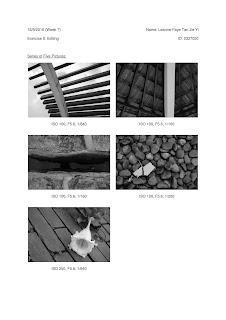29/9/2016
Leanne Faye 0327020
My current hobby/obsession. I attended a workshop for pointed pen calligraphy. Ever since then, I have never been this in love with writing ever before. Pointed pen calligraphy requires more skills as we have to control the pressure. The workshop started off with practicing drills and showing us the proper way to hold the oblique pen. It was definitely not easy at first, but I got the hang of it really fast. I wanted to learn calligraphy is mainly because I have been watching people online doing calligraphy for the longest time, I decided to stop looking and start learning. Practice makes perfect. The photos below are taken during the workshop.
Details of the workshop:
Website - http://www.kligraphy.com/product/basic-pointed-pen-calligraphy-workshop/
Location:
The Alphabet Press11, Jalan SS 26/8, Taman Mayang Jaya,
47301 Petaling Jaya, Selangor, Malaysia
Leanne Faye 0327020
My current hobby/obsession. I attended a workshop for pointed pen calligraphy. Ever since then, I have never been this in love with writing ever before. Pointed pen calligraphy requires more skills as we have to control the pressure. The workshop started off with practicing drills and showing us the proper way to hold the oblique pen. It was definitely not easy at first, but I got the hang of it really fast. I wanted to learn calligraphy is mainly because I have been watching people online doing calligraphy for the longest time, I decided to stop looking and start learning. Practice makes perfect. The photos below are taken during the workshop.
practicing at home
Details of the workshop:
Website - http://www.kligraphy.com/product/basic-pointed-pen-calligraphy-workshop/
Location:
The Alphabet Press11, Jalan SS 26/8, Taman Mayang Jaya,
47301 Petaling Jaya, Selangor, Malaysia




































































